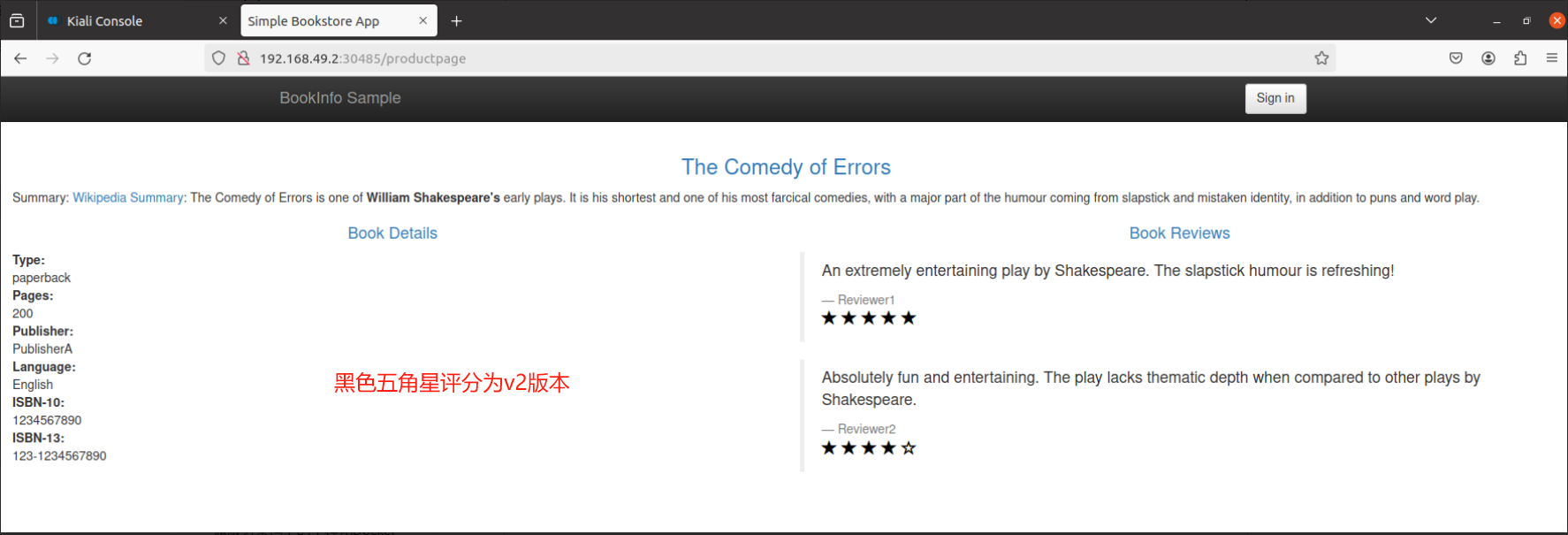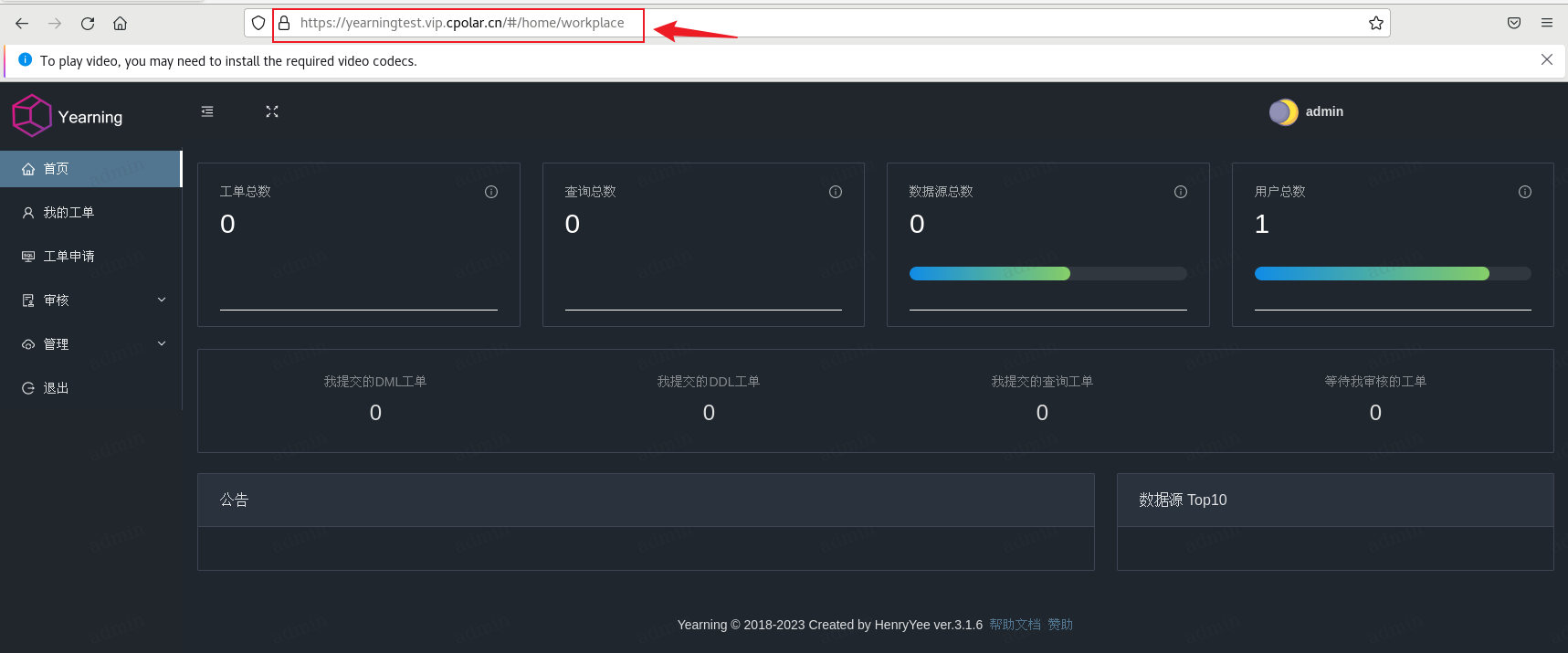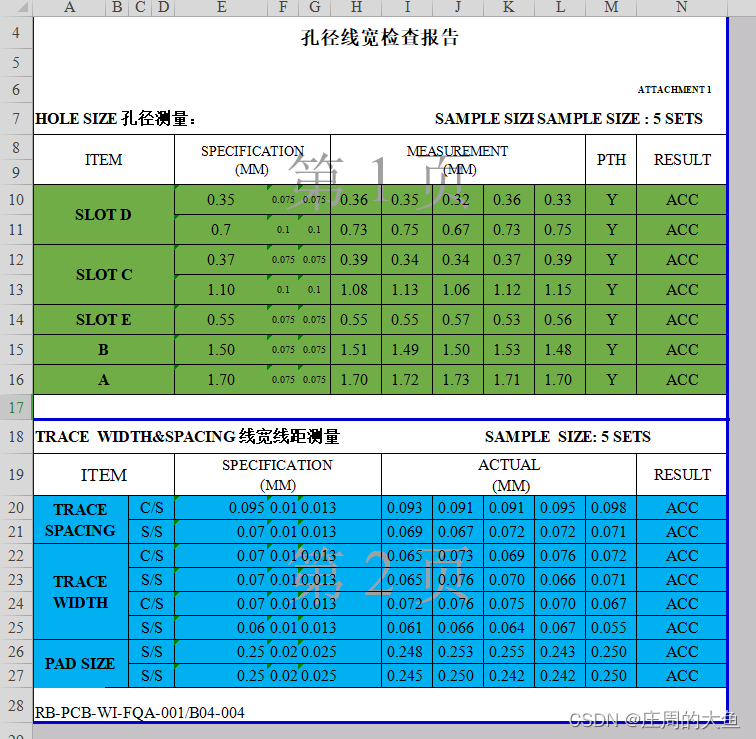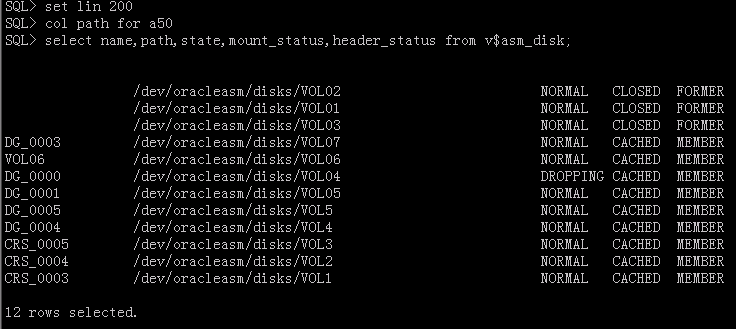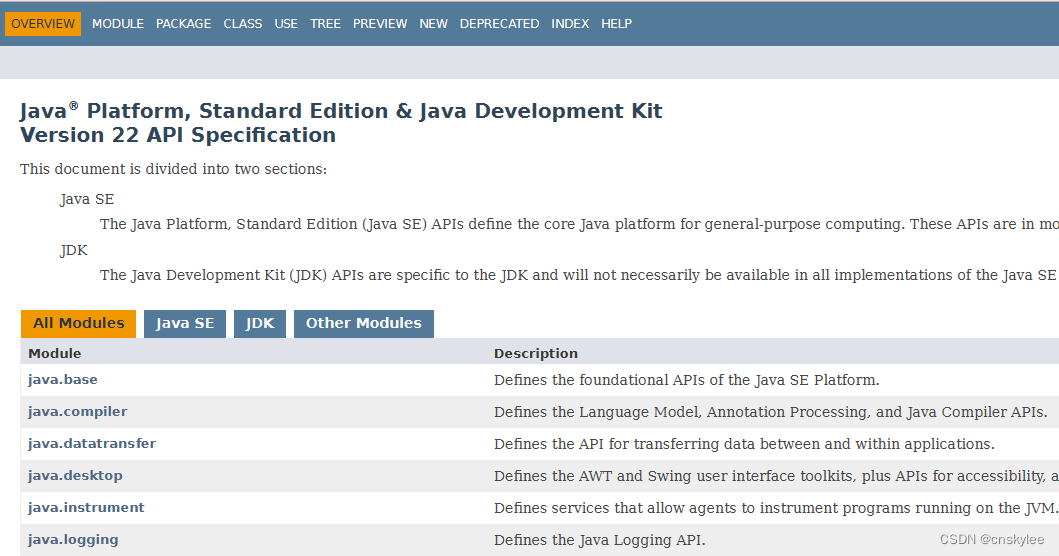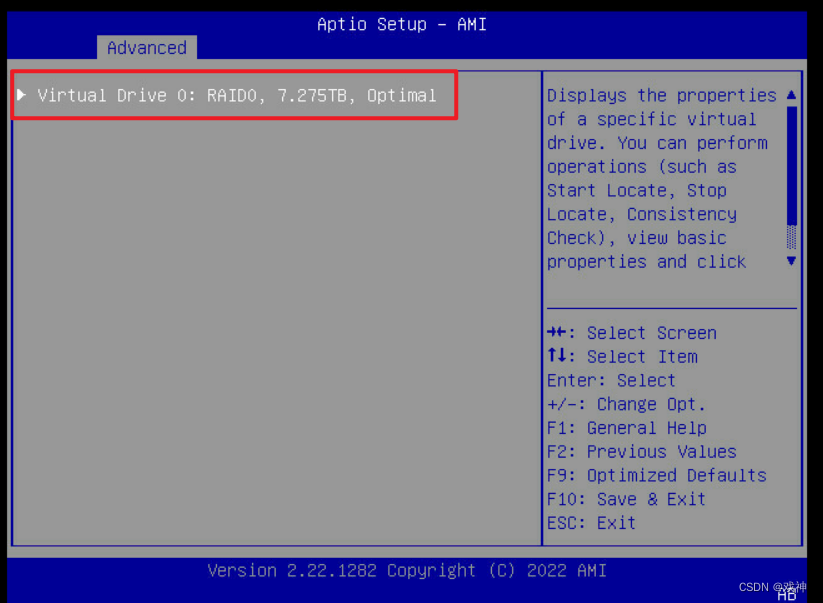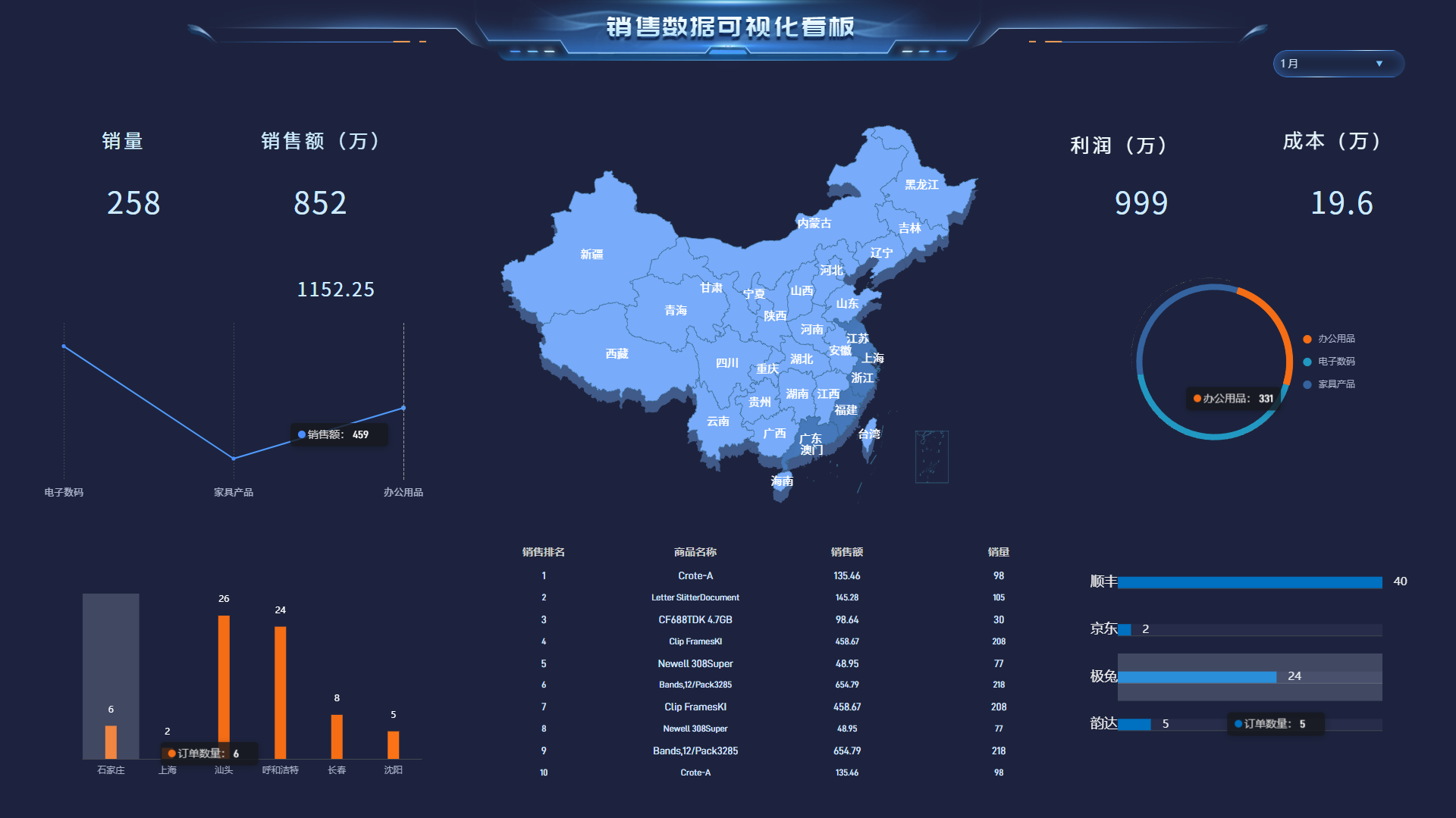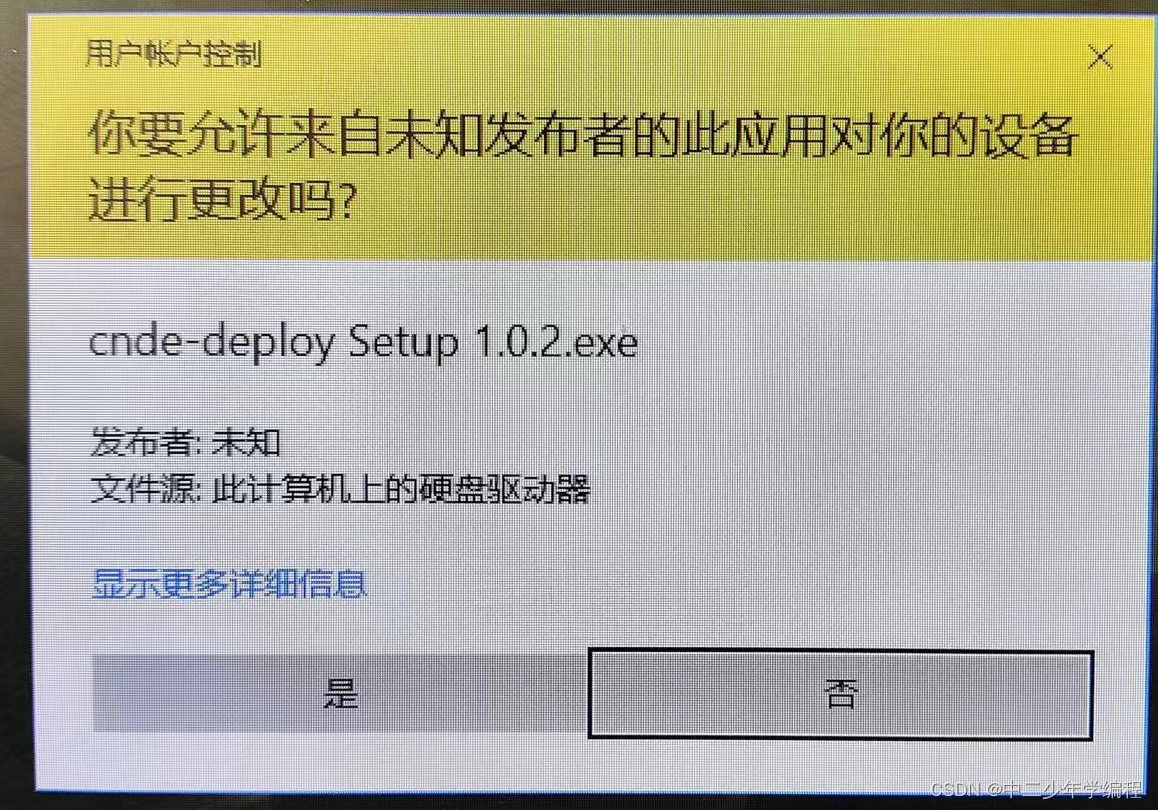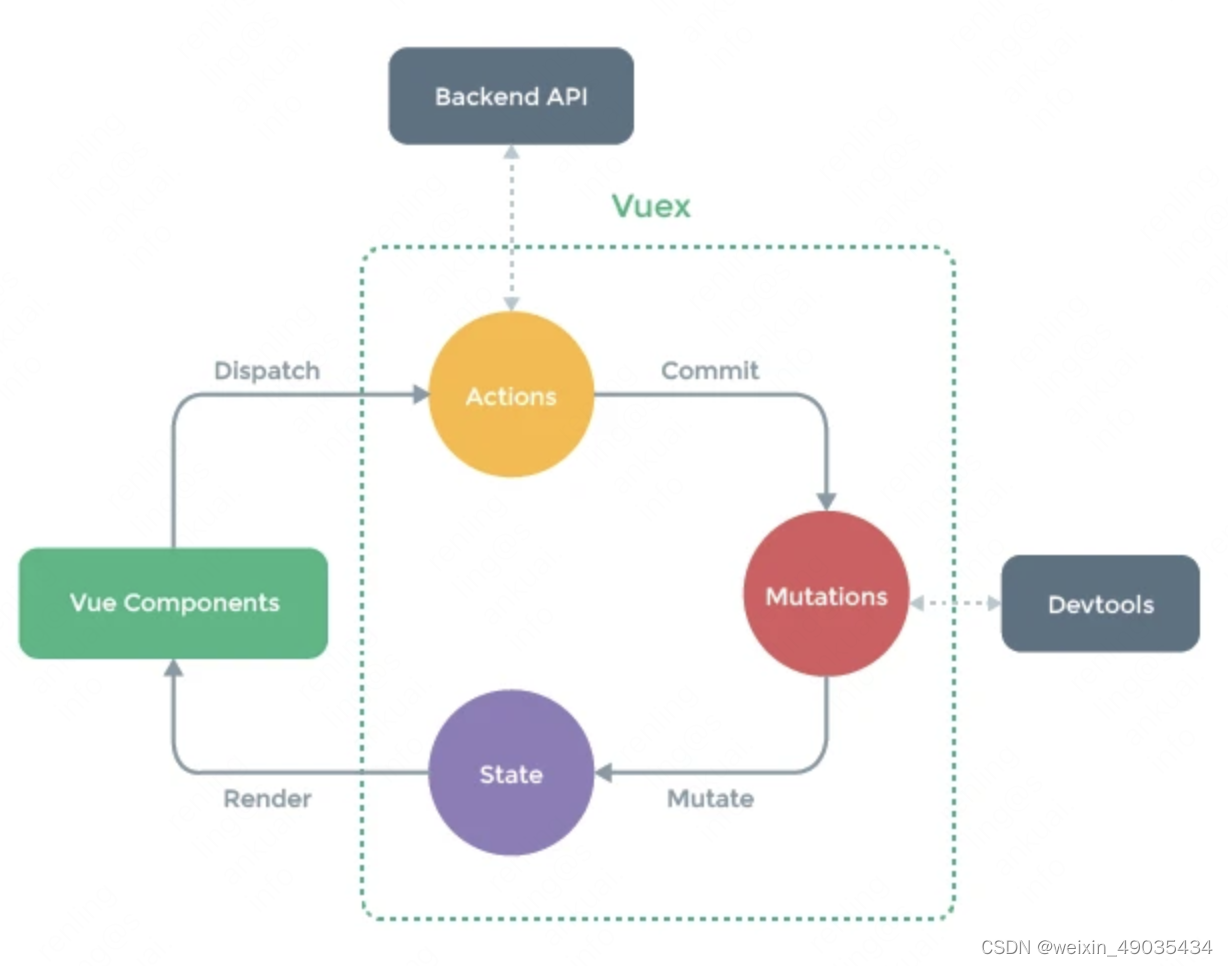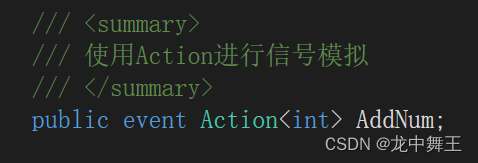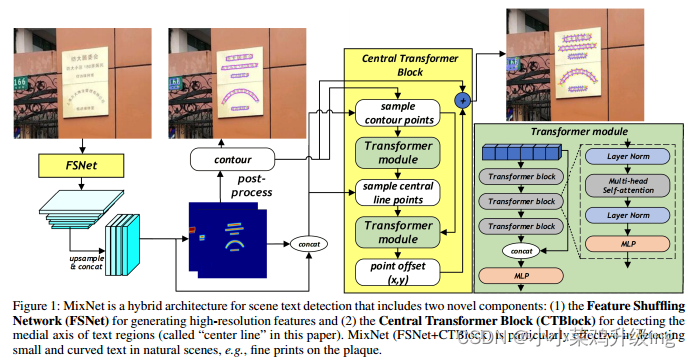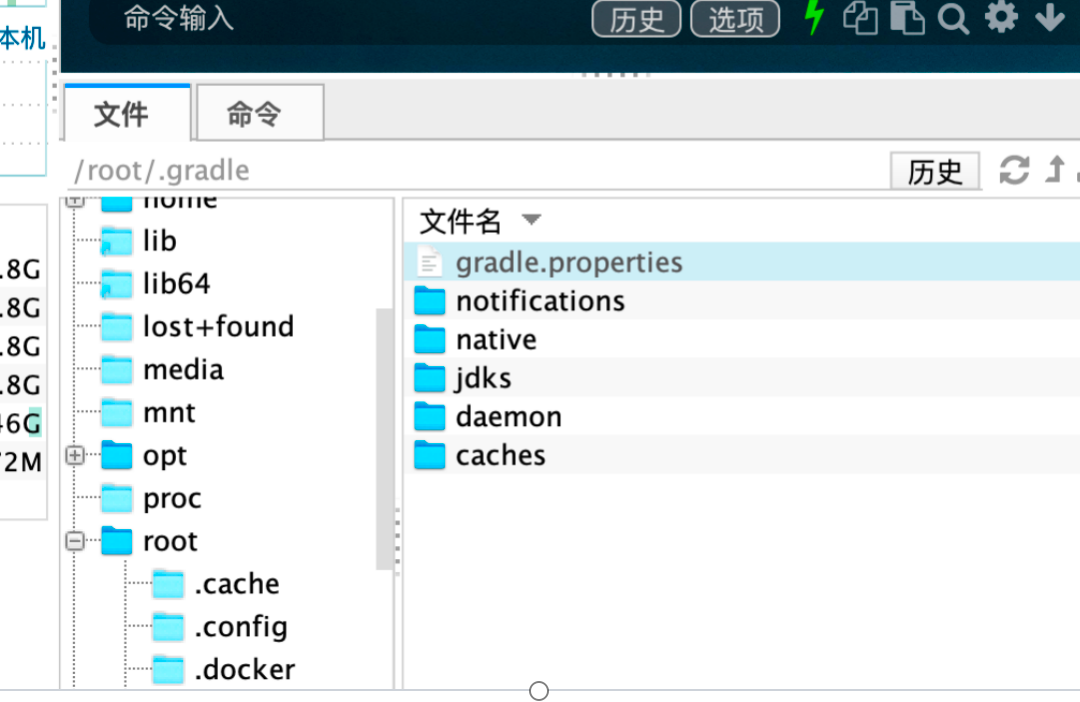RocketMQ 因其架构简单、业务功能丰富、具备极强可扩展性等特点被众多企业开发者以及云厂商广泛采用。历经十余年的大规模场景打磨,RocketMQ 已经成为业内共识的金融级可靠业务消息首选方案,被广泛应用于互联网、大数据、移动互联网、物联网等领域的业务场景
目录
1、官网下载 RocketMQ
2、安装 RocketMQ
3、启动 RocketMQ
4、代码测试
5、RocketMQ Dashboard 安装
6、关闭 RocketMQ
1、官网下载 RocketMQ
RocketMQ 官网:RocketMQ · 官方网站 | RocketMQ

笔者这里选择 4.9.4版本
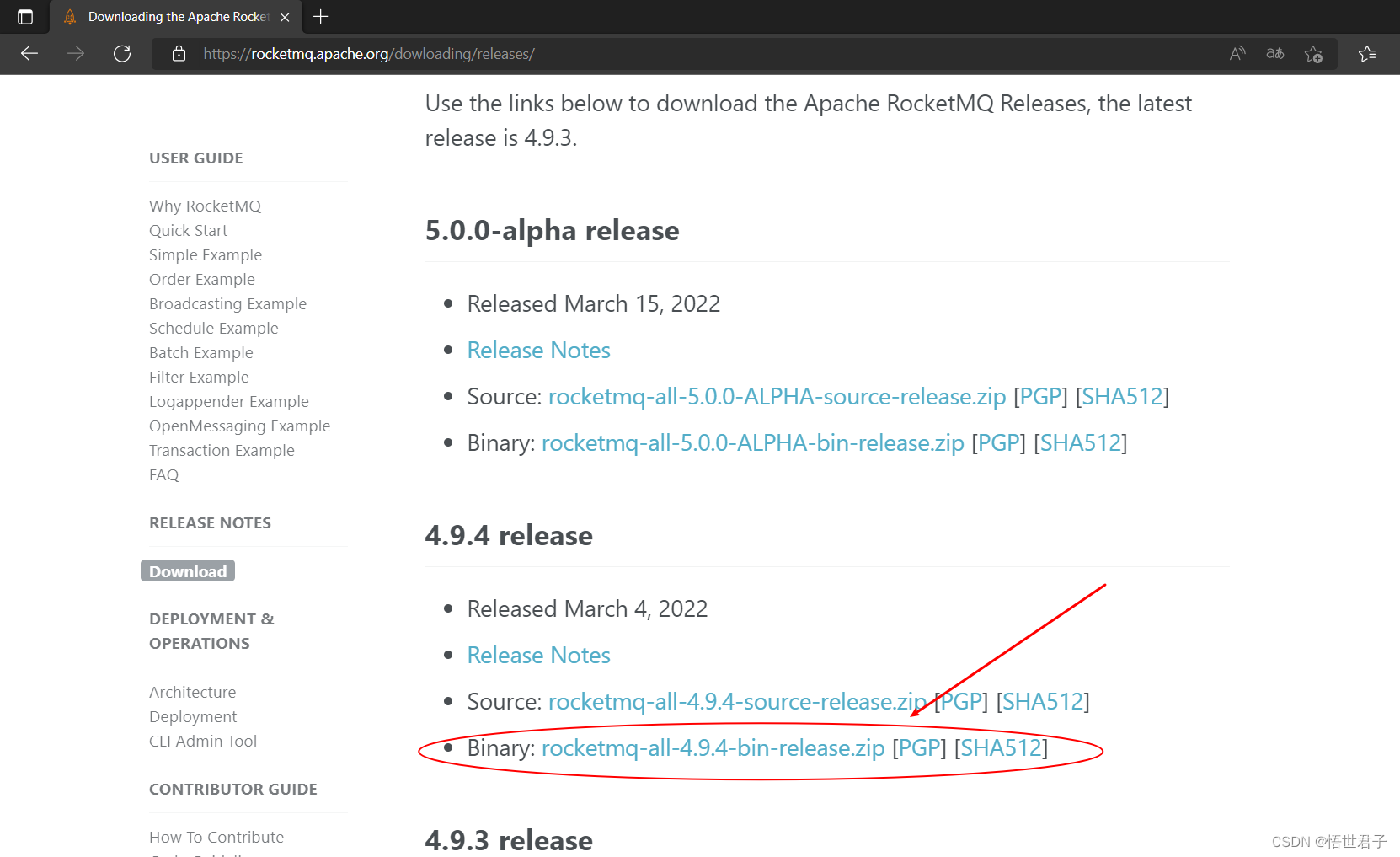
2、安装 RocketMQ
下载安装包后,将安装包上传到 linux

创建 RocketMQ 安装目录
mkdir -p /usr/local/rocketmq将安装包解压到新建的安装目录
unzip -d /usr/local/rocketmq rocketmq-all-4.9.4-bin-release.zip如果没有安装 unzip,可以执行下面命令安装
yum install -y unzip zip 
进入 rocketmq 安装目类
cd /usr/local/rocketmq/rocketmq-all-4.9.4-bin-release创建存放数据的目录
mkdir -p store store/commitlog store/consumequeue进入 conf 目录
cd conf
编辑 broker.conf 文件
vi broker.conf在 broker.conf 文件中追加下面内容
-
listenPort=10911 -
namesrvAddr=localhost:9876 -
storePathRootDir=/usr/local/rocketmq/rocketmq-all-4.9.4-bin-release/store -
storePathCommitLog=/usr/local/rocketmq/rocketmq-all-4.9.4-bin-release/store/commitlog -
storePathConsumerQueue=/usr/local/rocketmq/rocketmq-all-4.9.4-bin-release/store/consumequeue
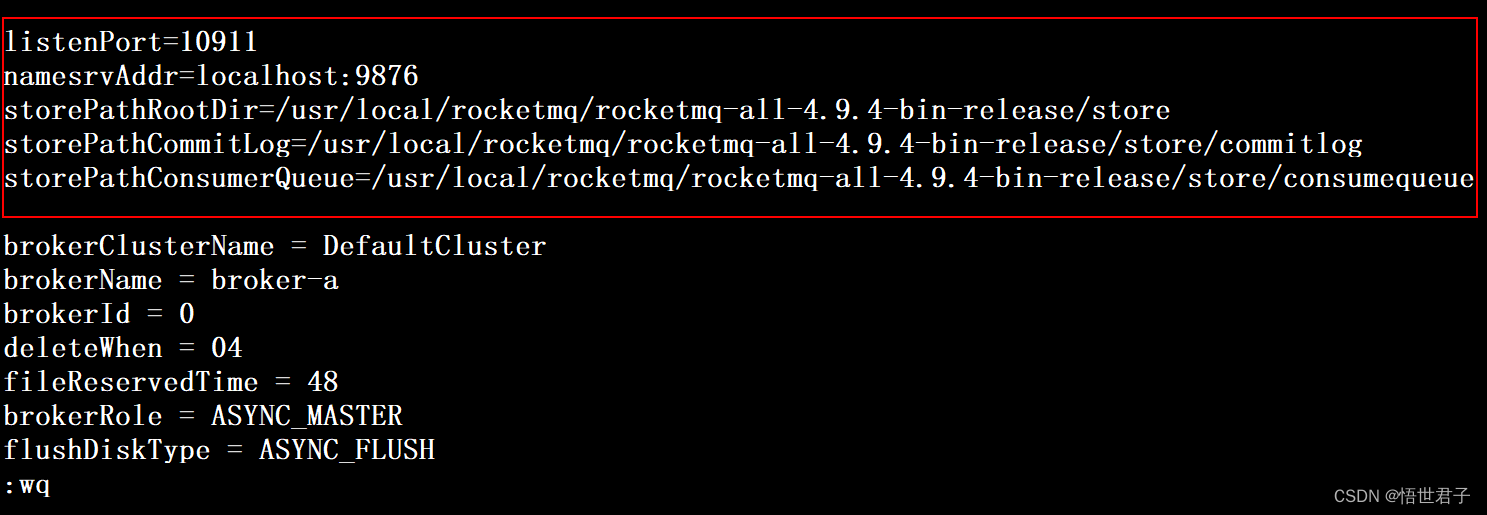
修改内存大小(这步不是必须的,如果你的机器内存足够,可以跳过这步,笔者机器内存只有1g,因此需要修改内存大小)
进入 bin 目录
cd /usr/local/rocketmq/rocketmq-all-4.9.4-bin-release/bin编辑 runbroker.sh 文件和 runserver.sh 文件,修改内存大小
编辑 runbroker.sh 文件,将 8g 修改为 512m
vi runbroker.sh
修改后

编辑 runserver.sh 文件
vi runserver.sh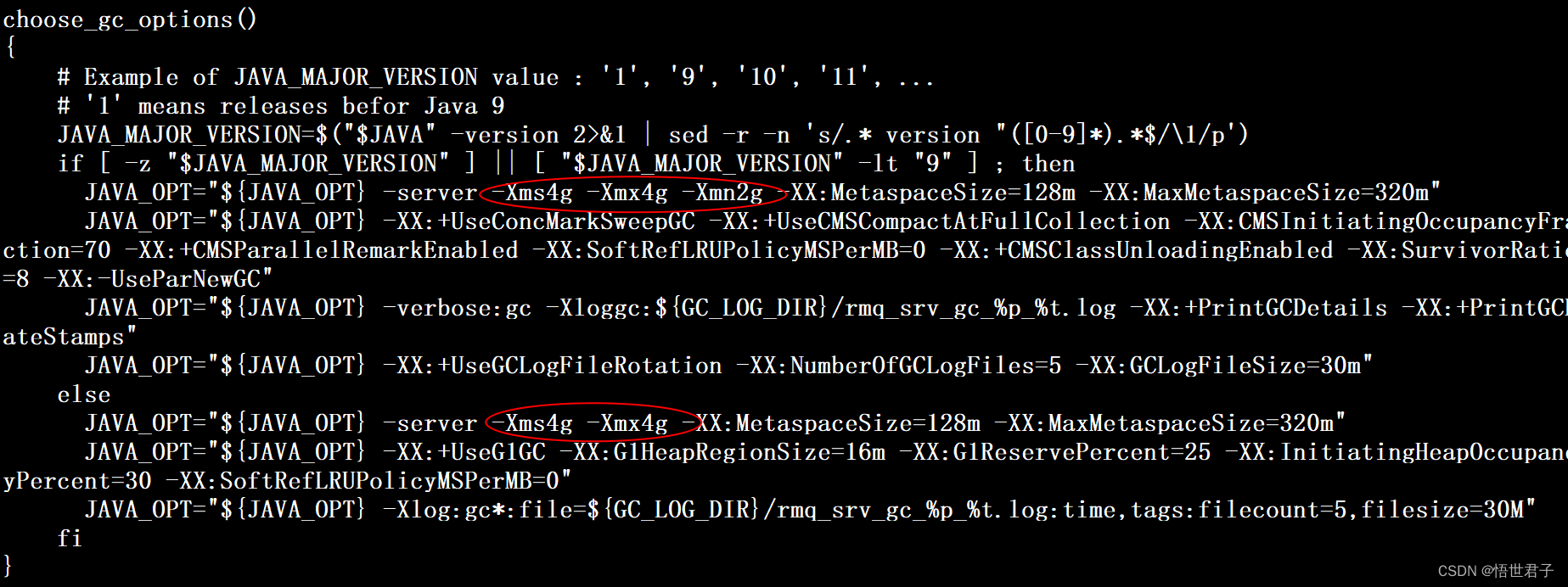
这里对 java 版本进行了判断,上面 2 处配置笔者都修改为 512m
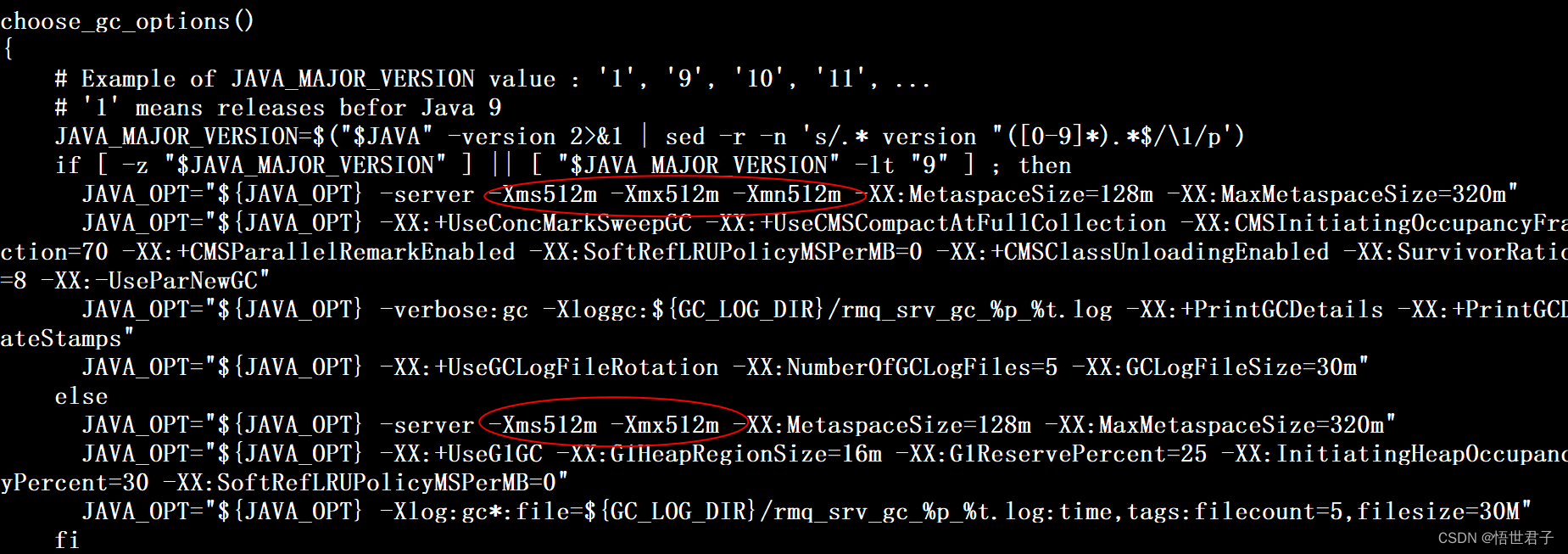
开放防火墙 9876 和 10911 端口
firewall-cmd --zone=public --add-port=9876/tcp --permanentfirewall-cmd --zone=public --add-port=10911/tcp --permanent更新防火墙规则(无需断开连接,动态添加规则)
firewall-cmd --reload查看防火墙所有开放的端口
firewall-cmd --list-port3、启动 RocketMQ
在 bin 目录下,执行下面命令
启动nameserver
nohup sh mqnamesrv &启动 broker
nohup sh mqbroker -c /usr/local/rocketmq/rocketmq-all-4.9.4-bin-release/conf/broker.conf &查看运行状态
ps -ef | grep mqnamesrv
ps -ef | grep mqbroker
4、代码测试
新建 maven 项目,添加 rocketmq-client 依赖
-
<dependency> -
<groupId>org.apache.rocketmq</groupId> -
<artifactId>rocketmq-client</artifactId> -
<version>4.9.4</version> -
</dependency>
官网示例
生产者代码
将 ip 地址修改为 linux 地址,笔者这里是 192.168.0.103
-
package client.sample; -
import org.apache.rocketmq.client.producer.DefaultMQProducer; -
import org.apache.rocketmq.client.producer.SendResult; -
import org.apache.rocketmq.common.message.Message; -
import org.apache.rocketmq.remoting.common.RemotingHelper; -
/** -
* SyncProducer -
* -
* @author wsjz -
* @date 2022/07/01 -
*/ -
public class SyncProducer { -
public static void main(String[] args) throws Exception { -
//Instantiate with a producer group name. -
DefaultMQProducer producer = new -
DefaultMQProducer("please_rename_unique_group_name"); -
// Specify name server addresses. -
producer.setNamesrvAddr("192.168.0.103:9876"); -
//Launch the instance. -
producer.start(); -
for (int i = 0; i < 100; i++) { -
//Create a message instance, specifying topic, tag and message body. -
Message msg = new Message("TopicTest" /* Topic */, -
"TagA" /* Tag */, -
("Hello RocketMQ " + -
i).getBytes(RemotingHelper.DEFAULT_CHARSET) /* Message body */ -
); -
//Call send message to deliver message to one of brokers. -
SendResult sendResult = producer.send(msg); -
System.out.printf("%s%n", sendResult); -
} -
//Shut down once the producer instance is not longer in use. -
producer.shutdown(); -
} -
}
![]()
消费者代码
-
package client.sample; -
import org.apache.rocketmq.client.consumer.DefaultMQPushConsumer; -
import org.apache.rocketmq.client.consumer.listener.ConsumeConcurrentlyContext; -
import org.apache.rocketmq.client.consumer.listener.ConsumeConcurrentlyStatus; -
import org.apache.rocketmq.client.consumer.listener.MessageListenerConcurrently; -
import org.apache.rocketmq.client.exception.MQClientException; -
import org.apache.rocketmq.common.message.MessageExt; -
import java.util.List; -
/** -
* Consumer -
* -
* @author wsjz -
* @date 2022/07/01 -
*/ -
public class Consumer { -
public static void main(String[] args) throws InterruptedException, MQClientException { -
// Instantiate with specified consumer group name. -
DefaultMQPushConsumer consumer = new DefaultMQPushConsumer("please_rename_unique_group_name"); -
// Specify name server addresses. -
consumer.setNamesrvAddr("192.168.0.103:9876"); -
// Subscribe one more more topics to consume. -
consumer.subscribe("TopicTest", "*"); -
// Register callback to execute on arrival of messages fetched from brokers. -
consumer.registerMessageListener(new MessageListenerConcurrently() { -
@Override -
public ConsumeConcurrentlyStatus consumeMessage(List<MessageExt> msgs, -
ConsumeConcurrentlyContext context) { -
System.out.printf("%s Receive New Messages: %s %n", Thread.currentThread().getName(), msgs); -
return ConsumeConcurrentlyStatus.CONSUME_SUCCESS; -
} -
}); -
//Launch the consumer instance. -
consumer.start(); -
System.out.printf("Consumer Started.%n"); -
} -
}
![]()
运行效果
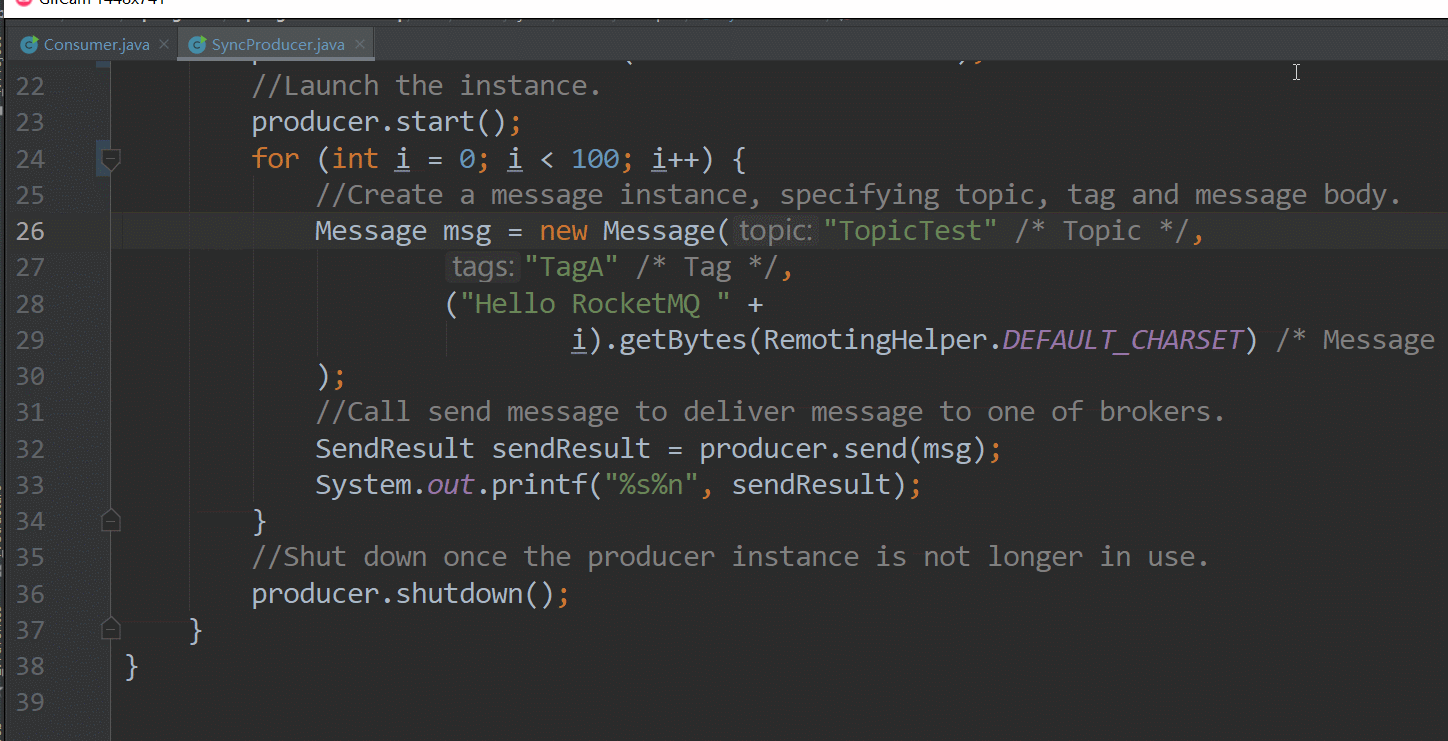
5、RocketMQ Dashboard 安装
RocketMQ Dashboard安装可以选择使用 docker方式也可以使用源码方式安装,笔者下面介绍源码方式安装
官方文档:https://rocketmq.apache.org/zh/docs/deploymentOperations/17Dashboard/
先在github上下载源码
RocketMQ Dashboard 源码地址:GitHub - apache/rocketmq-dashboard: The state-of-the-art Dashboard of Apache RoccketMQ provides excellent monitoring capability. Various graphs and statistics of events, performance and system information of clients and application is evidently made available to the user.
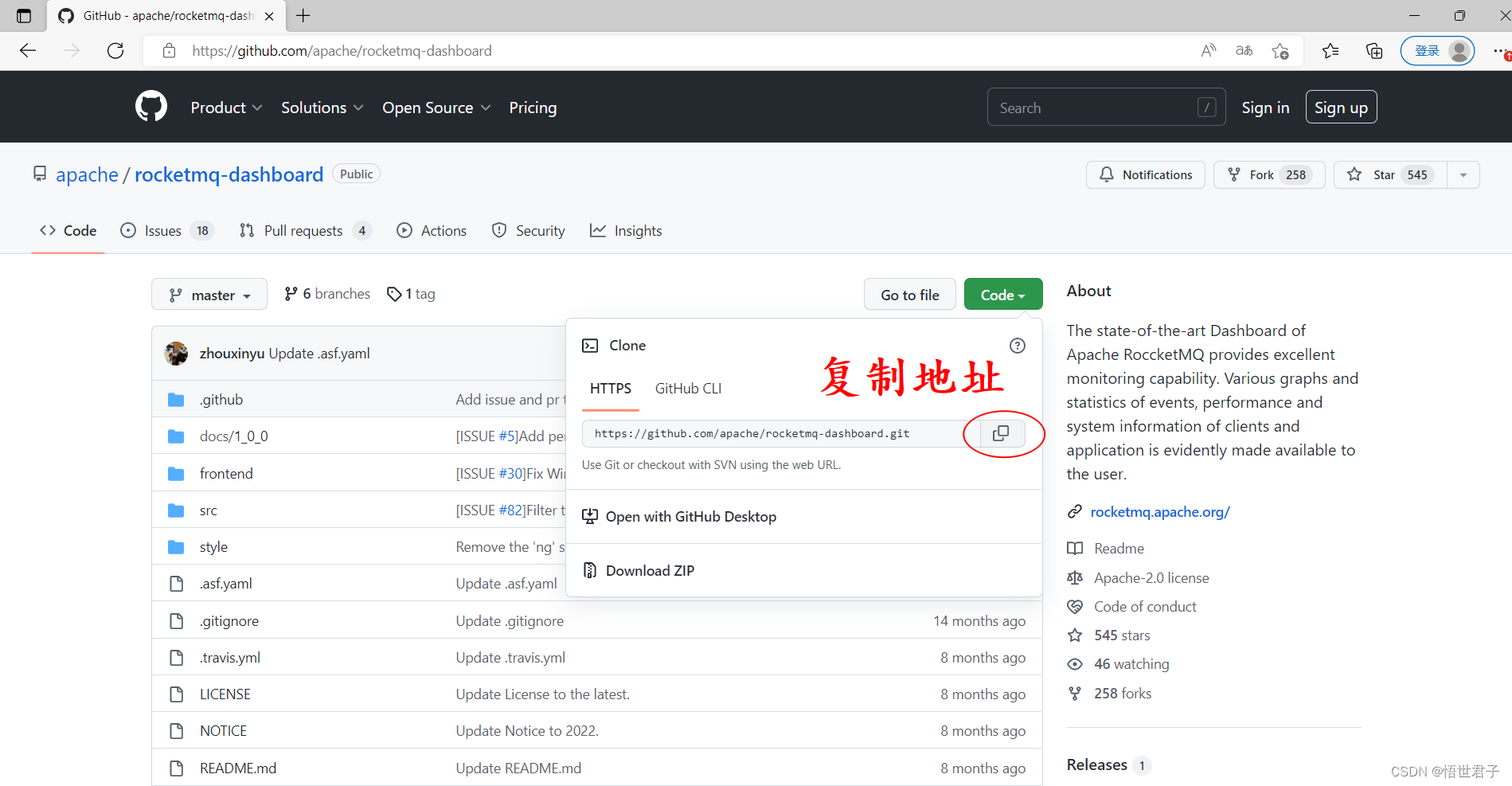
将项目克隆到本地文件夹

使用eclipse等编辑器打开项目
项目是 springboot项目,找到 application.yml 文件,修改 rocketmq 地址

笔者的地址是192.168.0.103:9876
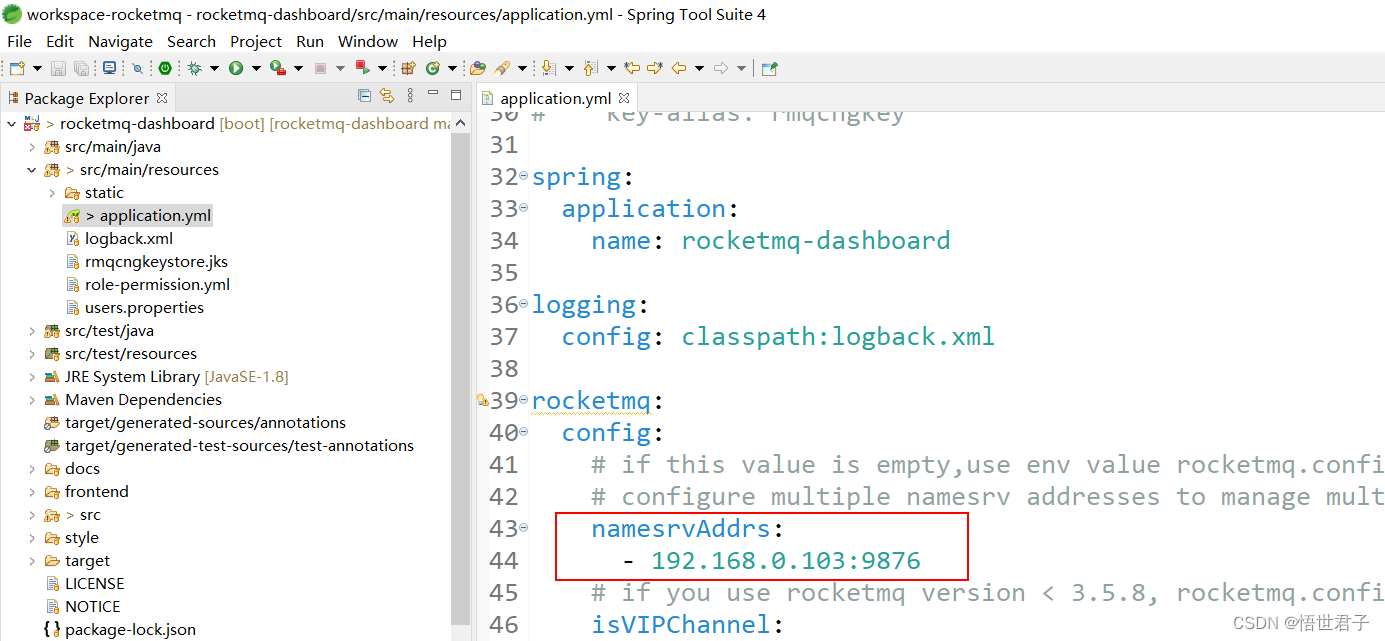
不使用 VIP 通道,改为 false

启动项目,浏览器访问 http://localhost:8080

如果需要的话,可以将RocketMQ Dashboard打成 jar 包,进行部署
RocketMQ Dashboard安装成功
6、关闭 RocketMQ
进入bin目录
关闭 broker
sh mqshutdown broker关闭 nameserver
sh mqshutdown namesrv至此完
